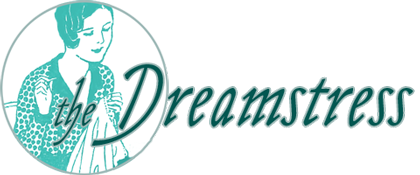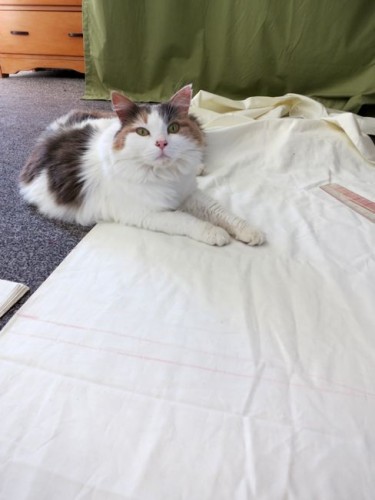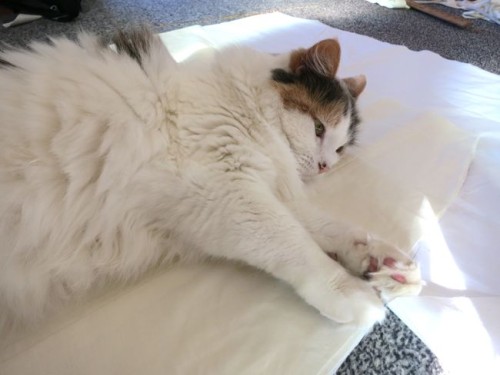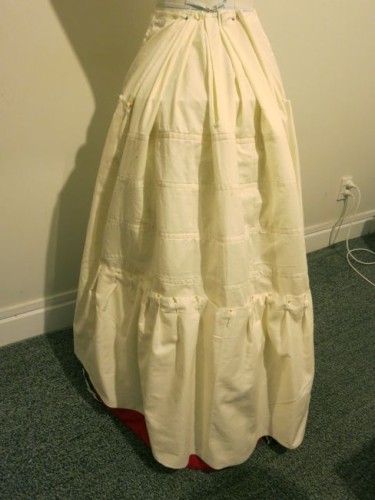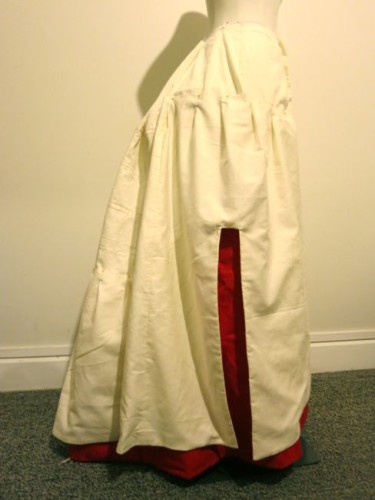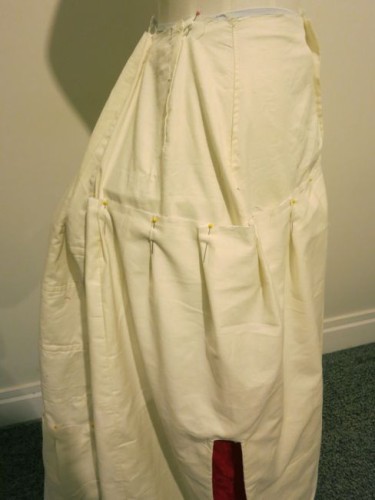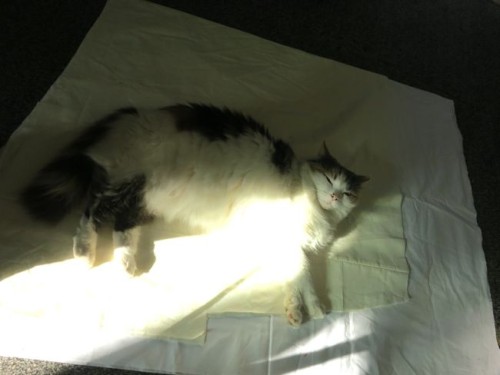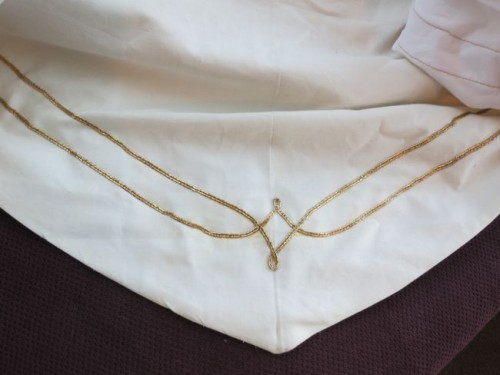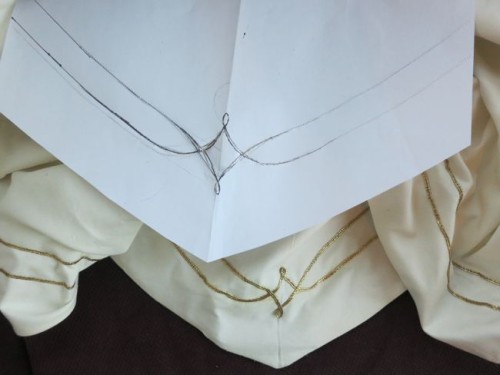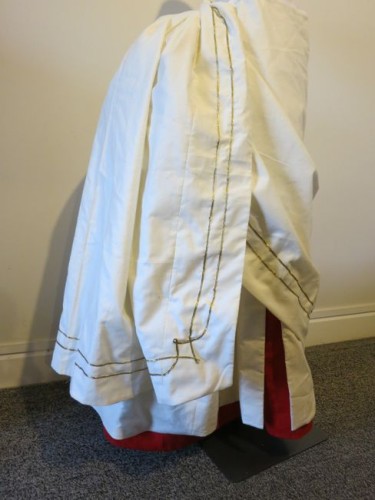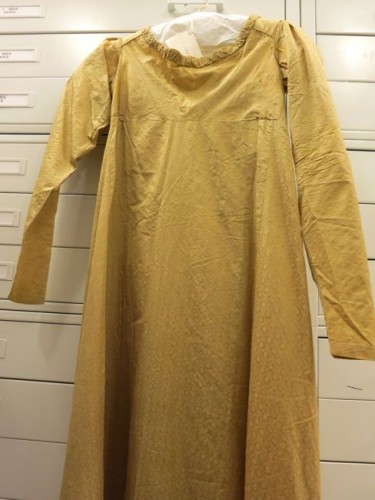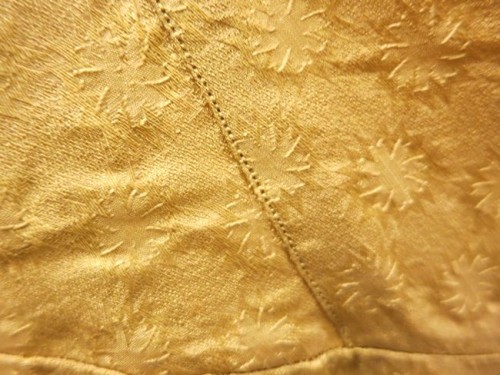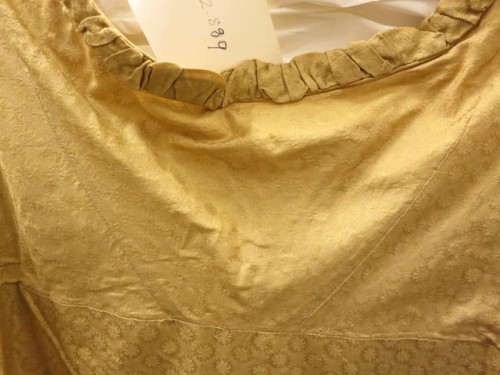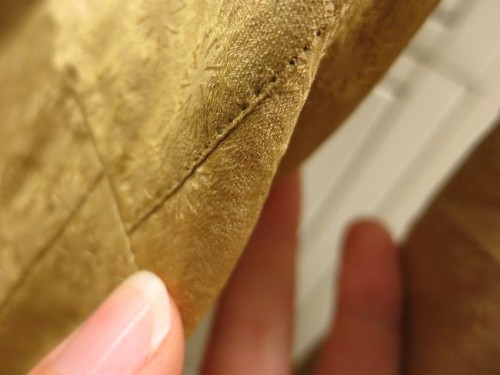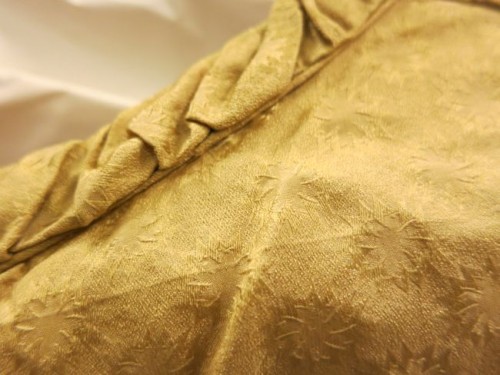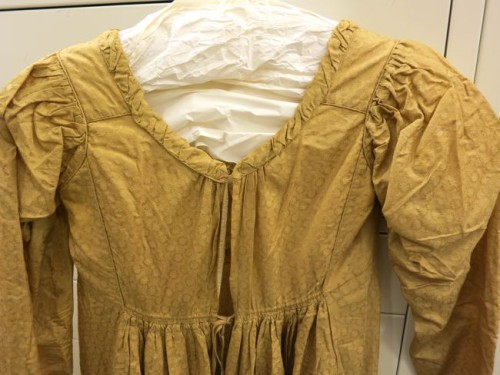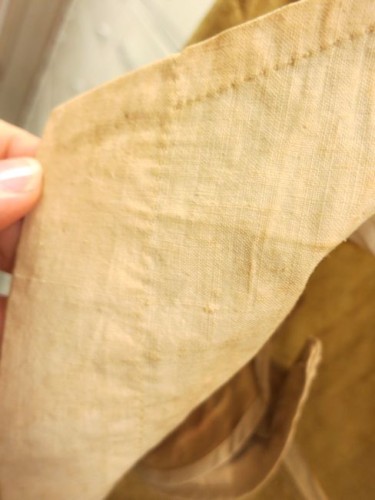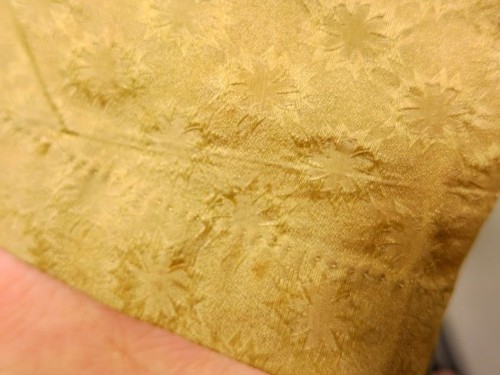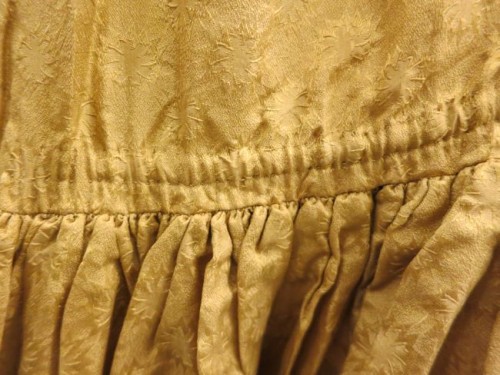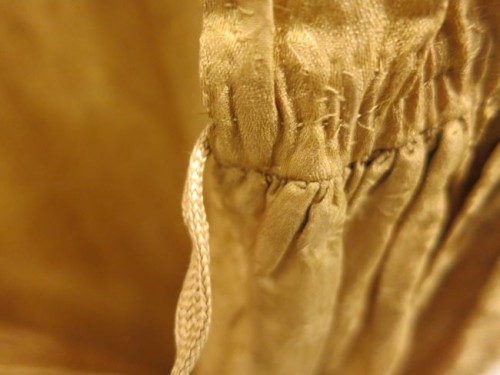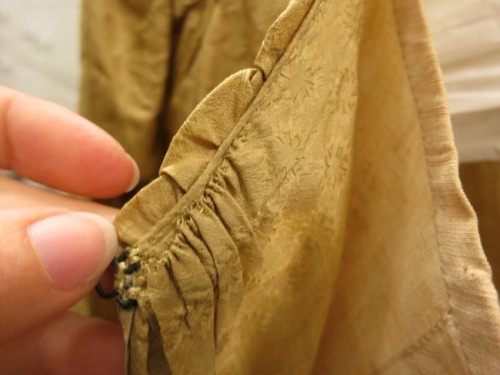Well, it’s been five years, a lot of fabric, a lot of thread, a lot of buttons, a lot of gold braid, and a bit of moaning and swearing and threatening the garment with dire consequences (“I will DYE you blue. I’ll do it! I swear! You’ll be an abomination unto Nuggan from head to toe. Behave or dye!”) but I have finally finished the whole Polly / Oliver Perks ensemble, and Polly is ready to stand for Borogravia and women’s rights and well-maintained pubs and clean socks everywhere.

(well, not quite everywhere, but not just on feet and in the sock drawer and other places you might normally expect to find them).
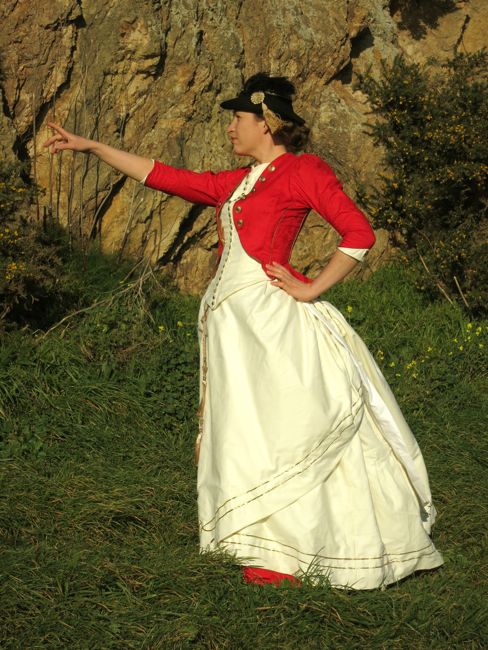
This dress and I have done battle, I lost some skirmishes, but I’ve come out the winner in the end, and I’m rather pleased with it. It’s Borogravia does girlie-military, with lots of gold braid and fitting, meets historically plausible 1880s fancy dress. After seeing the photoshoot images, there are a few places where I need to tack the skirt panels into place. and a few other teeny tweeks that need doing. It’s rather like working out a military victory: you don’t just win, you have to negotiate and discuss terms for a while!

Also, it’s rather good for marching purposefully in. I know this because I did a LOT of purposeful marching during the photoshoot with Sarah. I marched purposefully towards the camera, and then past the camera. Then I marched purposefully back in the other direction. And then I marched purposefully back. Then we marched off to another location, and I did it all over again. The dress looked fabulous. I, on the other hand, was doing this repetitively, in long grass, and 3 kilos of skirt and a corset. It was hard work!
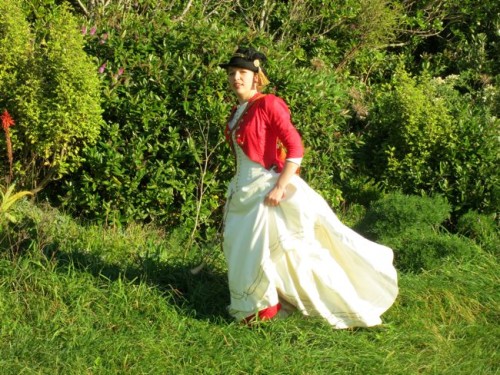
These photos are just a taster of the photoshoot – Sarah took most of the photos on her camera and they will be up on her livejournal soon (I hope), and the ones I’m showing are the ones she took on my camera (so any imperfections in the images are thanks to my crappy camera, not Sarah’s skill!).
The only regret I have about the photoshoot is that I don’t have a sword. But then, Polly did her best work without a sword, and you always have a good knee handy when you need it!
I did remember Polly’s most important accessory though.
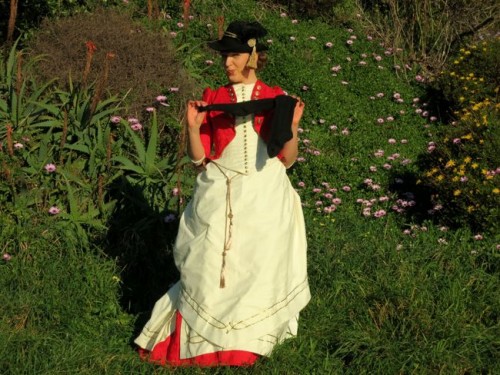
Oh yes. A good pair of socks is most important for…marching.
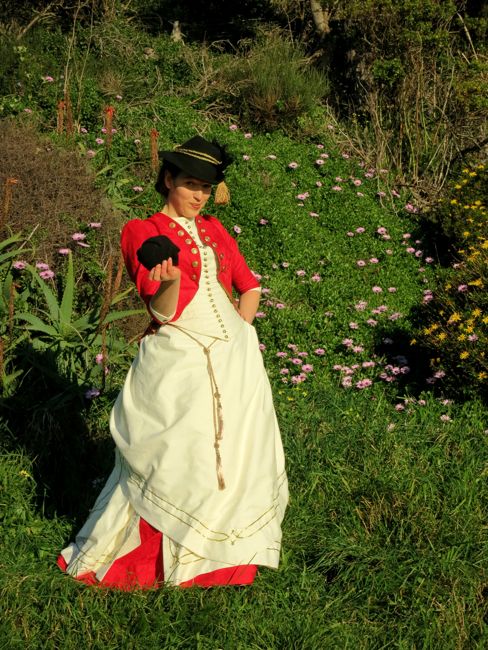
The Challenge: #15 ‘White’
Fabric: 5 metres of ivory cotton sateen (a gift), 3.5 metres of white cotton (can’t remember if I was given it or bought it, but if I did it cost less than $5), scrap of linen for the hem (free), red cotton jacquard (free, and leftover from the jacket).
Pattern: My own, based on the 1887-9 day dress from the collection of the V&A pattern in Janet Arnold’s Patterns of Fashion 2.
Year: ca. 1885
Notions: 21 metres of gold braid for the cornelli work ($21).
How historically accurate is it? As a fancy dress? Pretty close! The construction is a teeny bit modern in places, but not too bad. As a real garment, perhaps something for the seaside? A bit costume-y for my standards, but after 5 years I’ll take any form of it that is finished!.
Hours to complete: 15. I budgeted 10, but then I decided the skirt needed the cornelli work, and that took some time to design and sew. So just over an hour a day for the fortnight (though really, I did it in 3 x 5 hour chunks).
First worn: Sunday 28 July, for the photoshoot (immediately after sewing the last bit of trim on the hat).
Total cost: NZ$21-$26 It would have been practically free if it hadn’t needed that trim! Darn.
